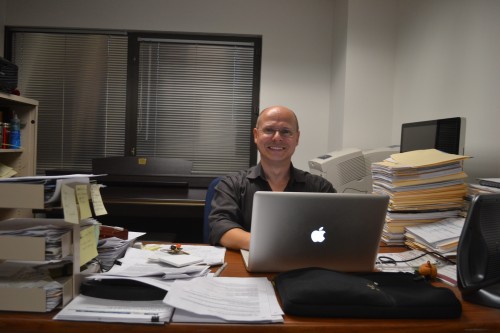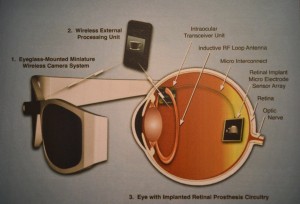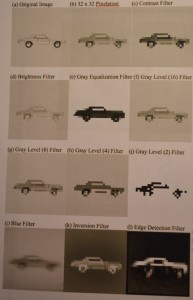
A professor at the University of Arizona is giving sight back to those who once saw.
Since 2002, Dr. Wolfgang Fink, an associate professor in the UA Departments of Electrical and Computer Engineering and Biomedical Engineering, and colleagues have been working on a new way to give sight to those whose vision has been damaged from age-related macular degeneration or retinitis pigmentosa, both are conditions that result in visual impairment and ultimately total blindness.

Both diseases affect the rods and cones in the retina that convert light into electrical signals, said Fink.
People who are born blind will not be able to receive such a “vision implant because their brain is not trained to do anything with visual signals,” said Fink.
Before his development, the visually impaired were given some sight back through existing vision implants but could only see a white object on a dark cloth in a dark room. Now patients may have the ability to see any time of the day through advanced neural stimulation.
In general, patients who undergo the procedure of getting a vision implant will be given a pair of “sunglasses with a miniature camera sitting on the glasses that transmits images wirelessly to a visual processing unit. Fink and his team demonstrated that this unit can be the size of a nine-volt battery or can be an iPhone or iPod. The camera images go into the processing unit and then the unit applies certain image processing filters on the camera stream to preprocess the high-resolution images to make them suitable for the implanted electrode array, said Fink.
The epi-retinal implant, sitting inside the eye and on top of the retina, has a transceiver unit in the implant that receives images from the iPhone or visual processing unit and stimulates the retina with a pattern of electrical pulses to produce the visual perceptions.
The associated image processing was originally used on a mobile robot (named Cyclops) with one (camera) eye to begin to test the retinal implants and see what a human patient could potentially see with the different image processing filters.
The National Science Foundation and the Department of Energy helped fund Fink’s research. He worked with the Biomimetic MicroElectronic Systems Engineering Research Center at USC,


Caltech, and UC Santa Cruz, as well as with the DOE-funded Artificial Retina Consortium that helped create the first FDA approved retinal implant named the ARGUS II by Second Sight Medical Products, LLC in Sylmar, CA.
Over 90 patients worldwide have the ARGUS II implanted in their eyes. Majorly, the procedure has been successful. “However, there are serious deficiencies. A research article soon to appear in the Medical Engineering & Physics journal, as well as a forthcoming Discovery magazine article, will point out the deficiencies of current implants including the ARGUS II,” said Fink.
“Personally, I would not get it,” said Helen Slavicek, 88, a visually impaired woman who has Macular Degeneration, “I would rather spend the money on my grandchildren but the surgery sounds like an amazing progression in technology that would help a lot of people.”
Dr. Wolfgang Fink’s biggest goal for retinal implants is to provide high-resolution vision through advanced neural stimulation, i.e., vision at a resolution that approaches the number of electrodes on the implanted electrode array. Until then, Fink and others will be improving their technologies to reach their ultimate goal.
Email: [email protected]

